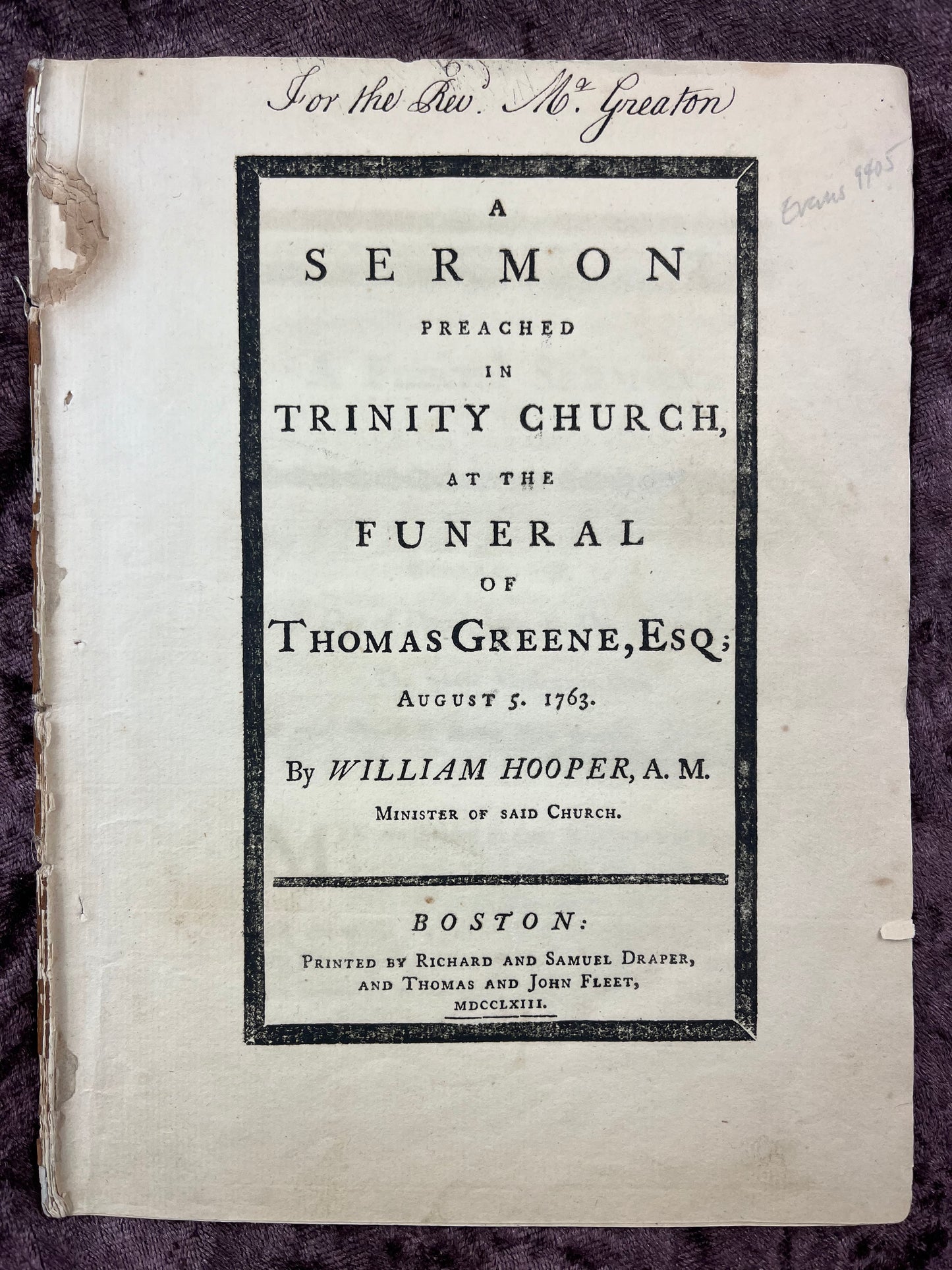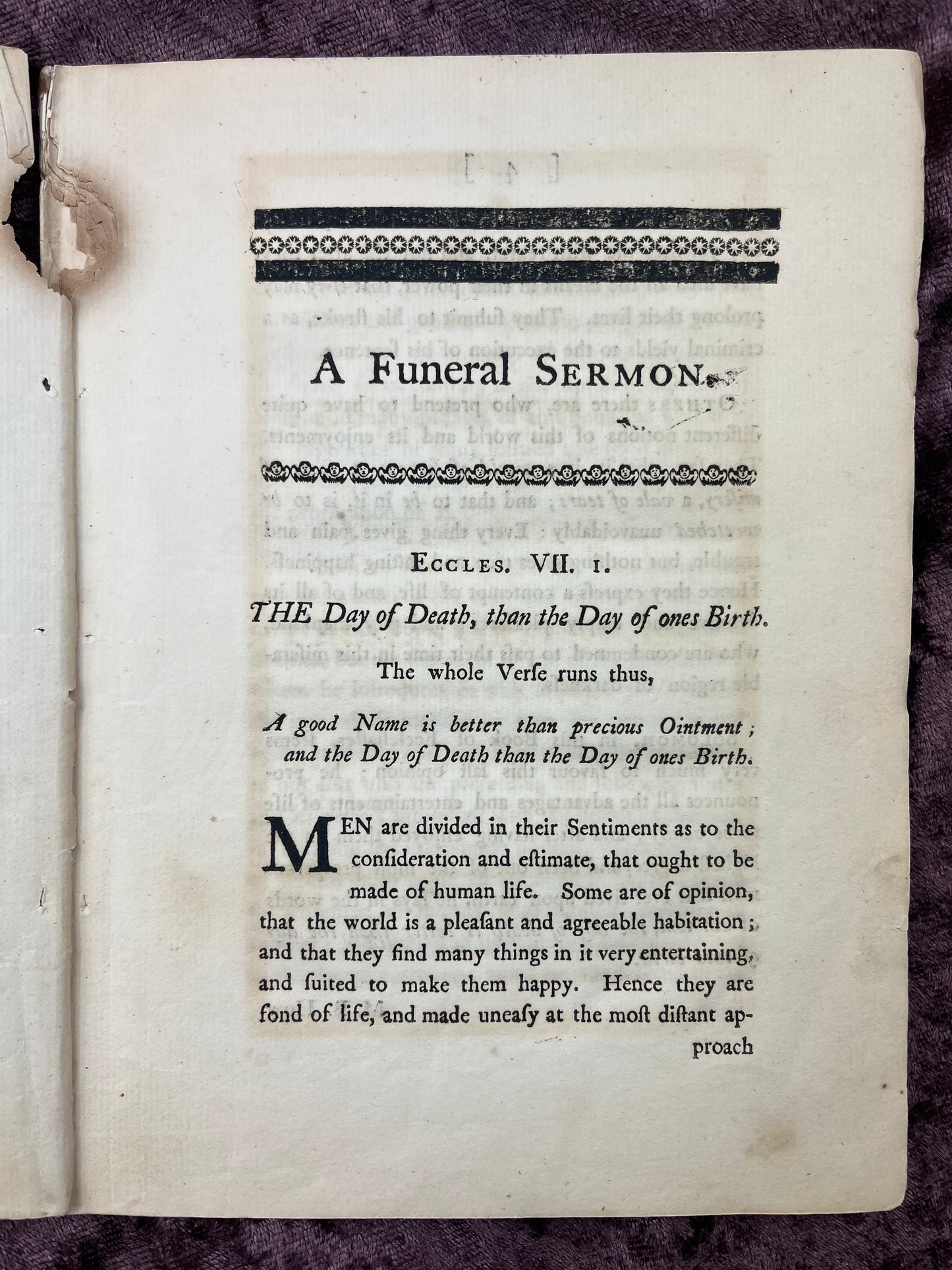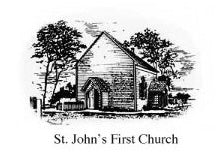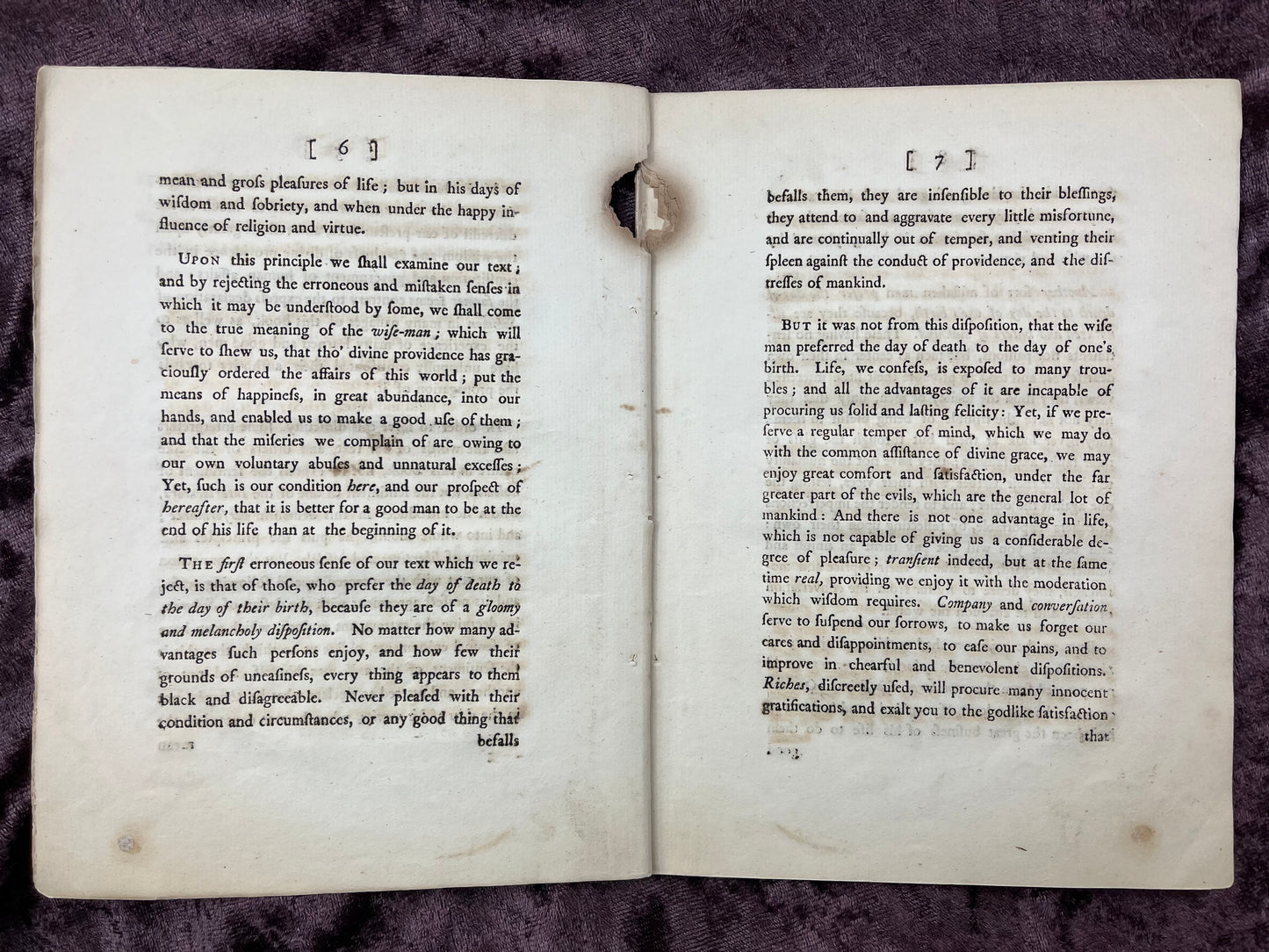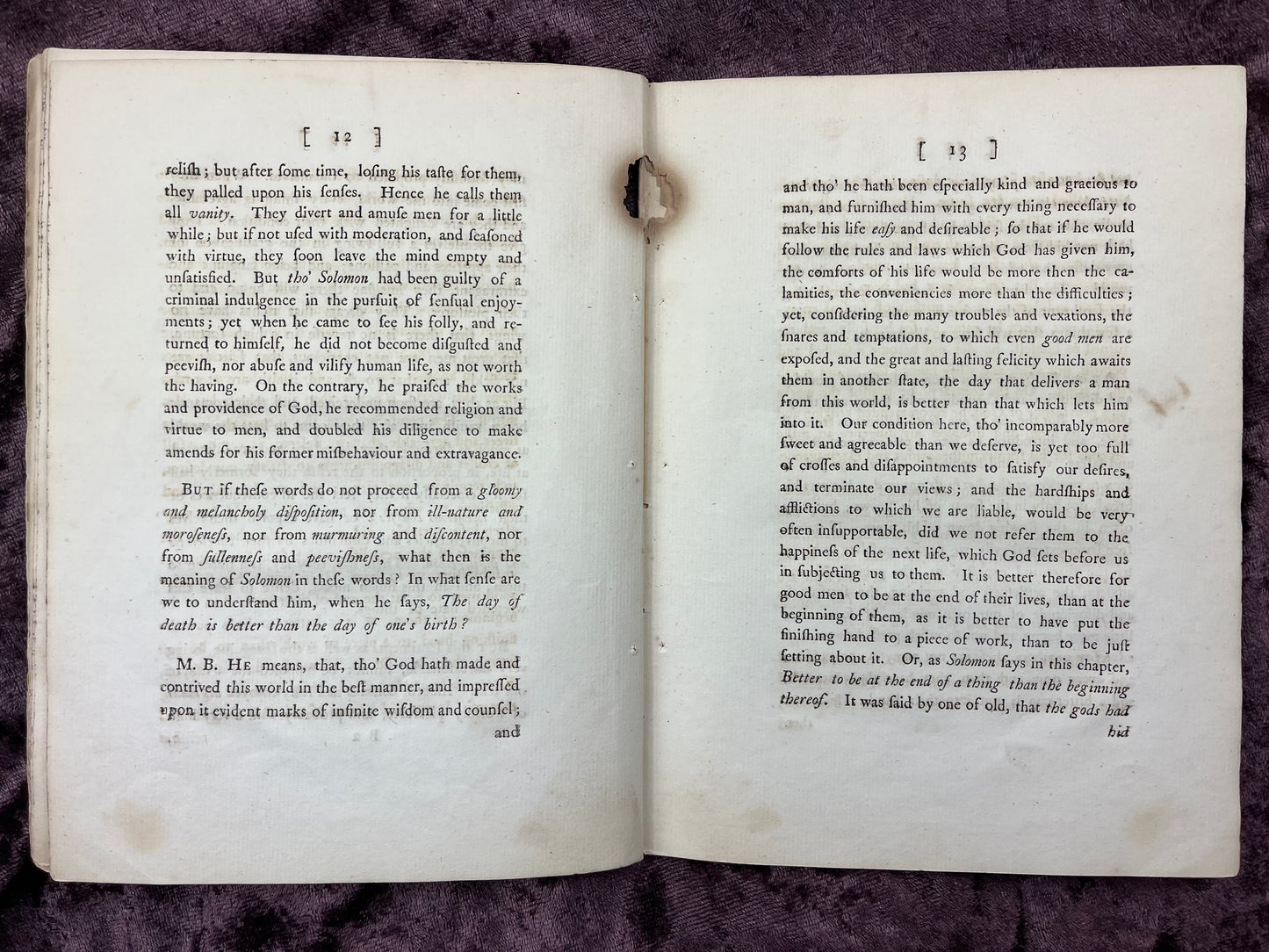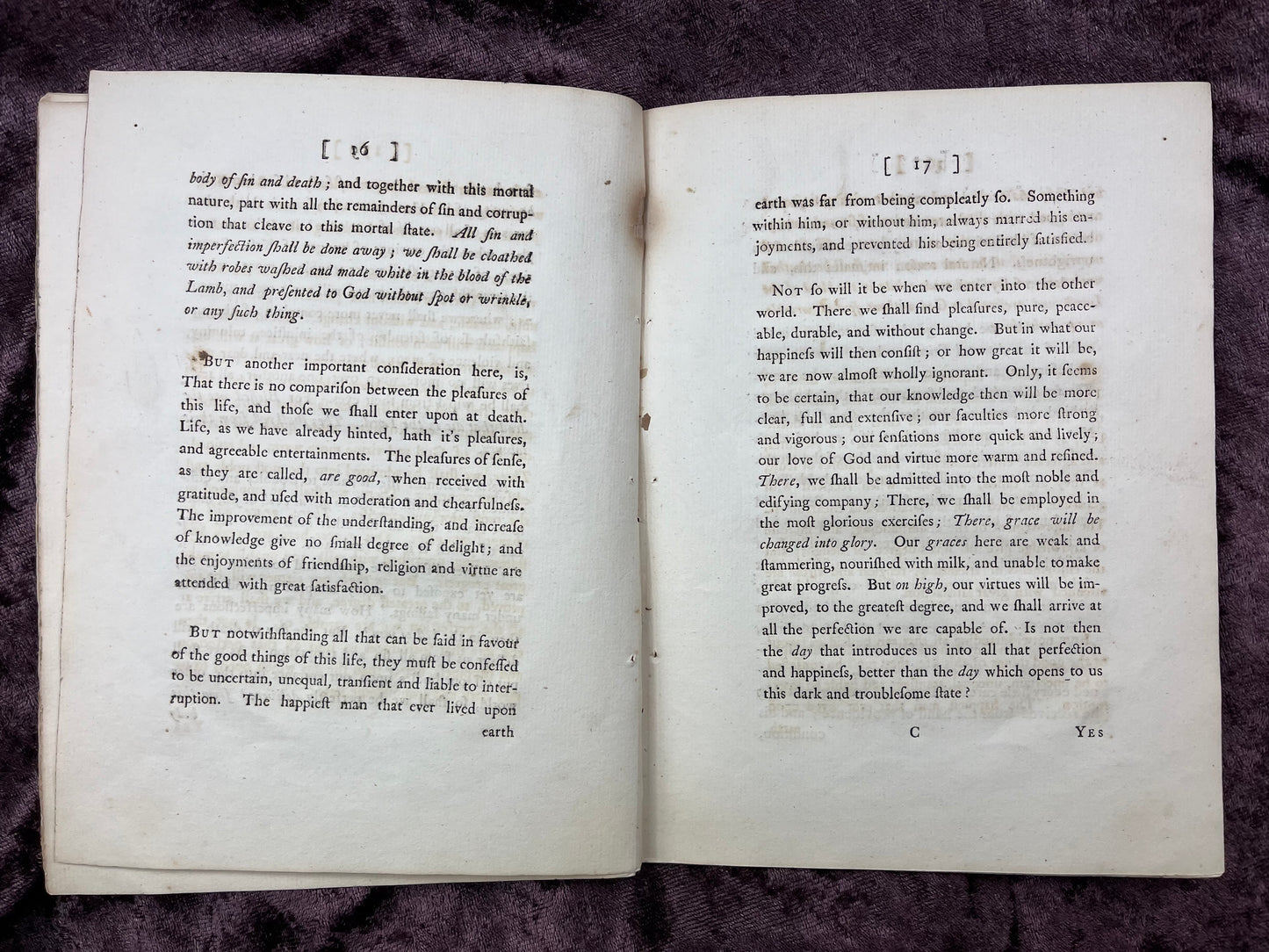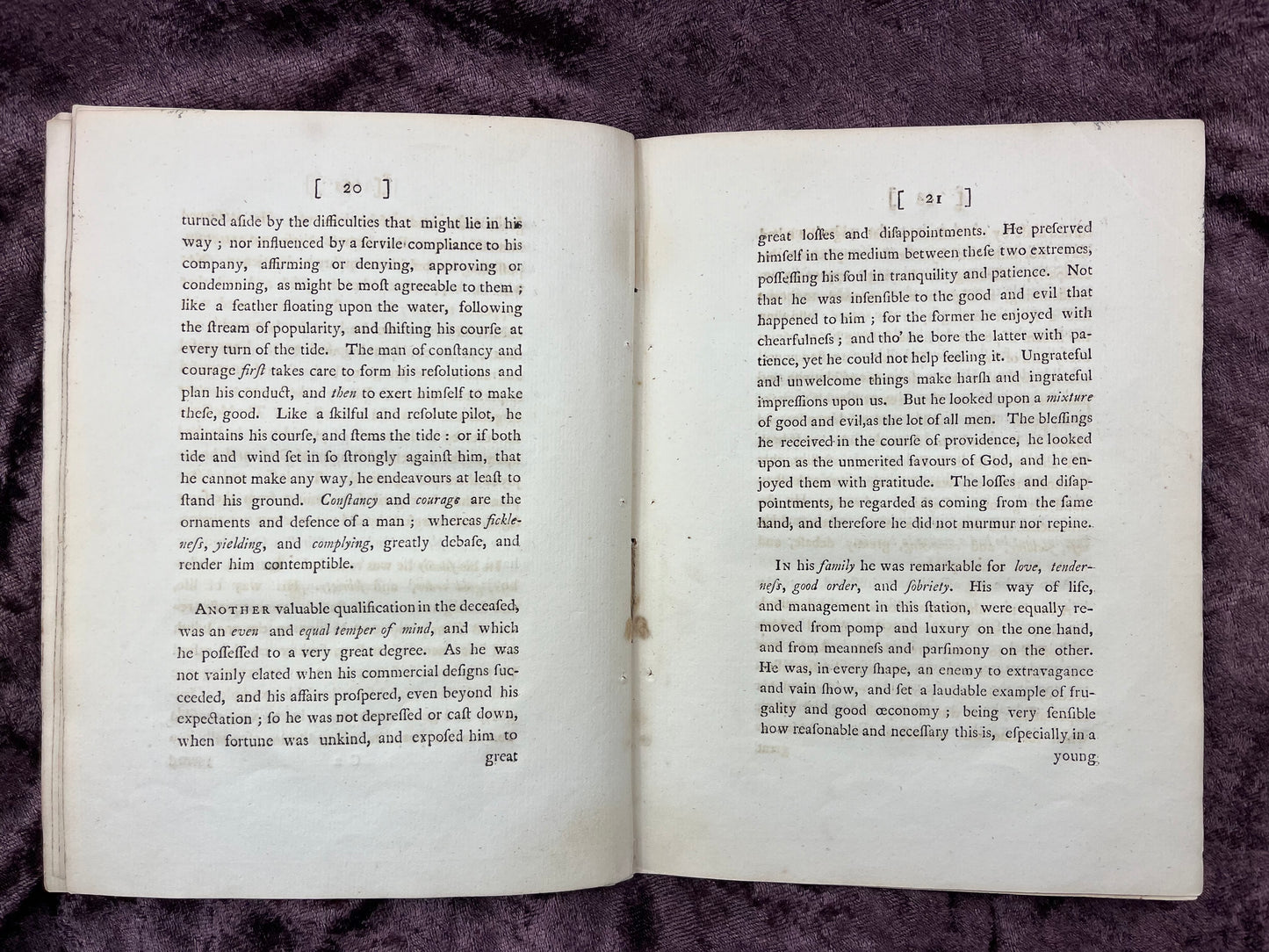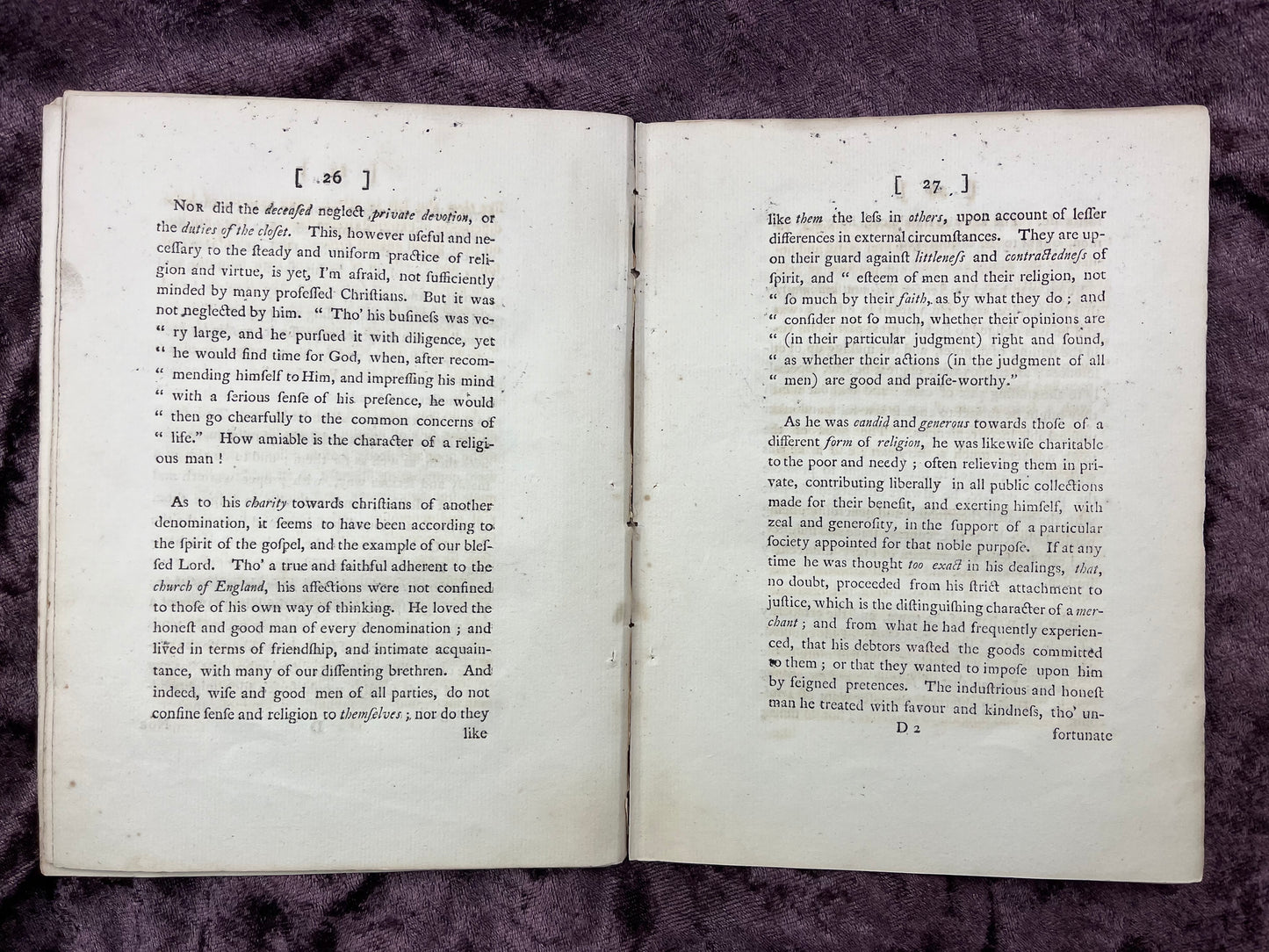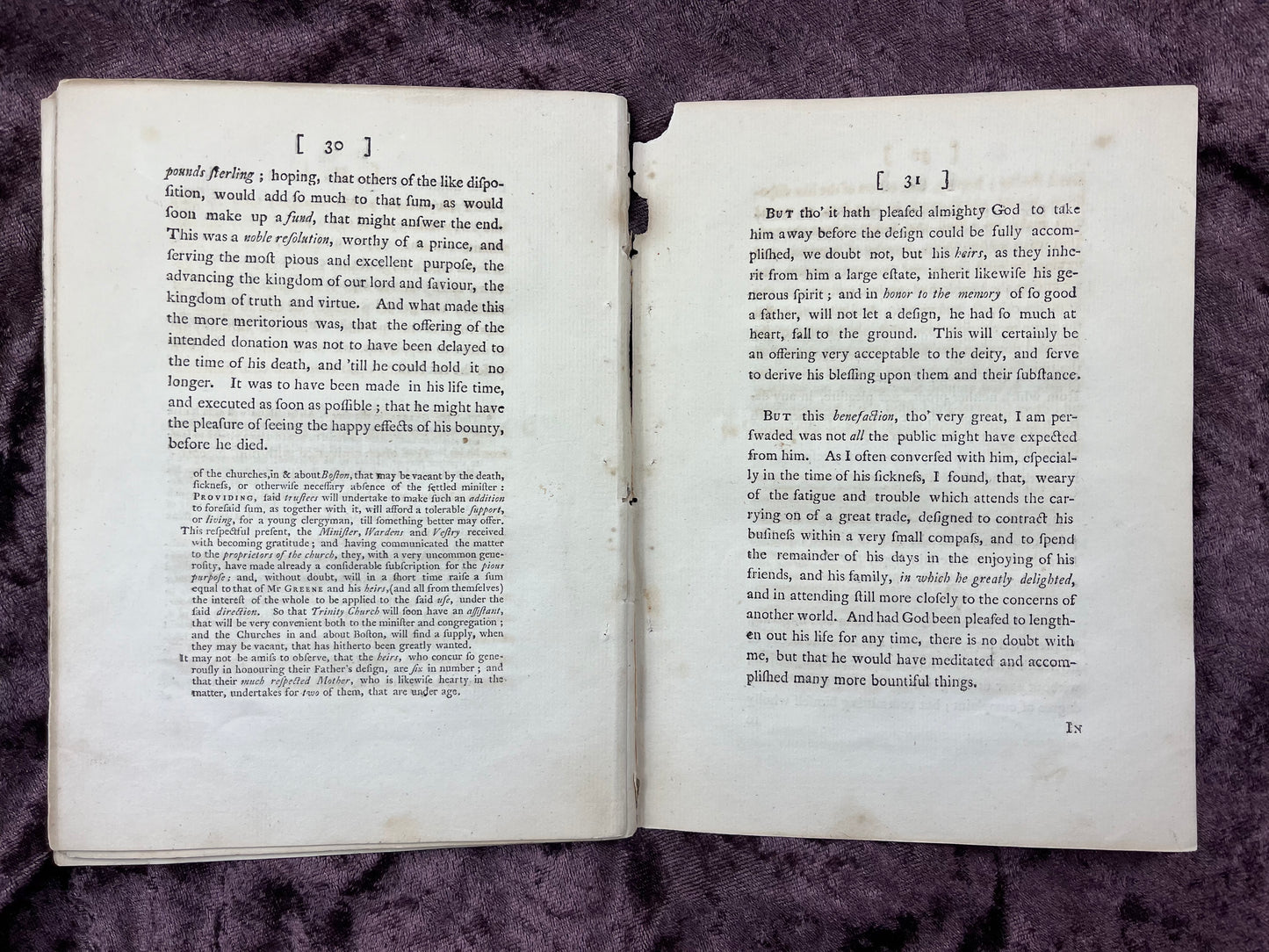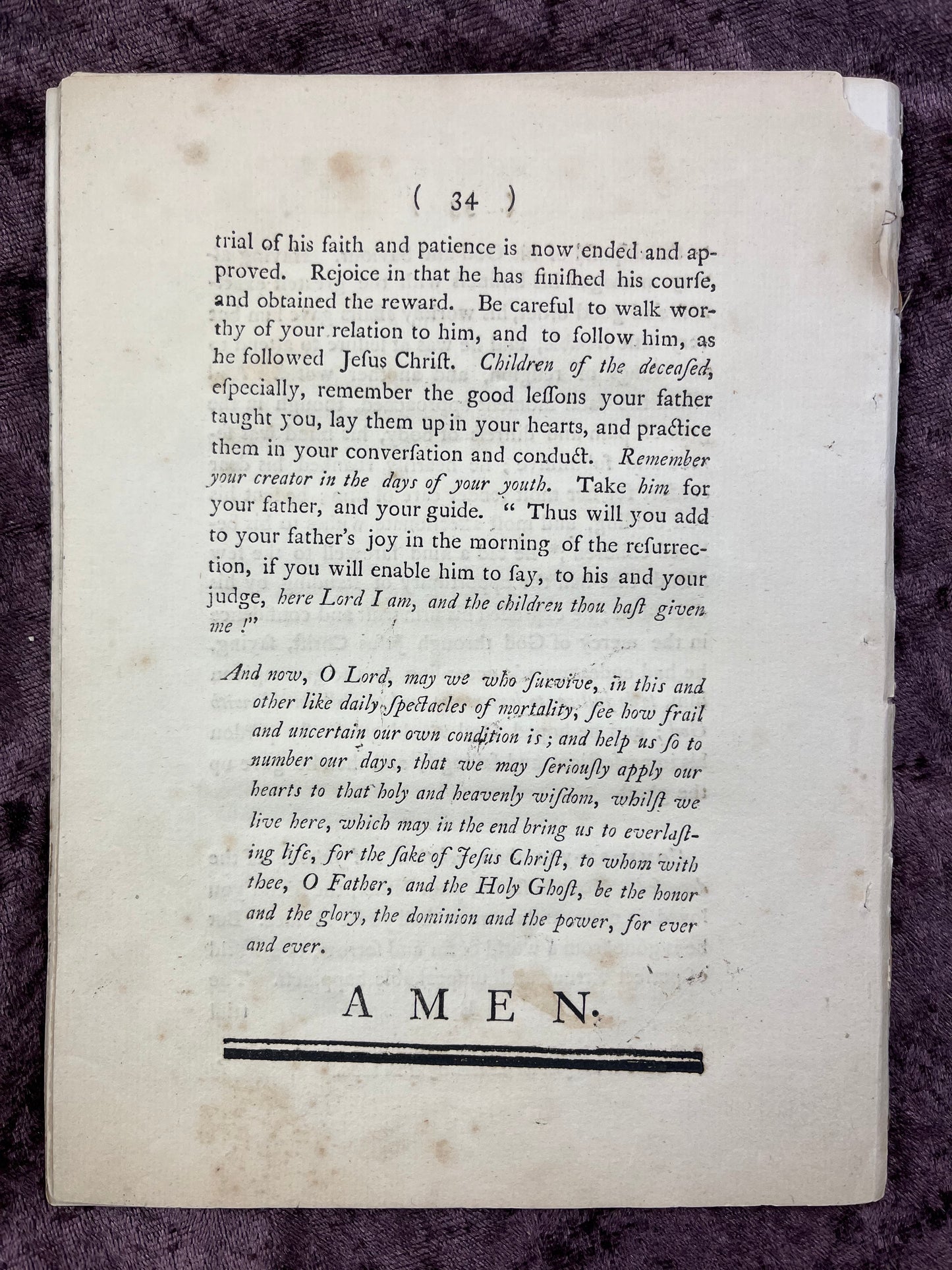1763 Quarto First Edition Pamphlet Sermon Preached In Trinity Church At The Funeral Of Thomas Greene ESQ By William Hooper-Owned By Reverend Mr. James Greaton The First Settled Minister At St. Johns
1763 Quarto First Edition Pamphlet Sermon Preached In Trinity Church At The Funeral Of Thomas Greene ESQ By William Hooper-Owned By Reverend Mr. James Greaton The First Settled Minister At St. Johns
Couldn't load pickup availability
Share
Importance: Reverend William Hooper, was a Congregational minister, educated at Edinburgh University who immigrated to America in 1734 from Ednam, Scotland to Boston, Massachusetts. He was Rector of the West Congregational Church on Cambridge Street in Boston from 1737 to 1740. He left that church and became an Episcopalian. He then returned to London, England and was ordained by the Church of England. He returned to Boston in 1747 and became the second Rector of Trinity Church where he served until his death in 1764.
His son, William Hooper (June 17, 1742-October 14, 1790) was an American Founding Father, lawyer, and politician. As a member of the Continental Congress representing North Carolina, Hooper signed the Continental Association and the Declaration of Independence.
Sources: *Hooper, William. “The Society of the Descendants of the Signers of the Declaration of Independence”. *Wikipedia.
Binding: Disbound Quarto Pamphlet. All edges sprinkled blue.
Provenance: Recto of the title page is inscribed For the Rev. Mr. Greaton
Reverend James Greaton (February 5th 1736-April 17th 1773) was born in Roxbury, Suffolk Massachusetts. In 1761 he married Mary Wheelwright (1744-1835) in Boston, Suffolk, Massachusetts.
Consequently, in 1767 the Rev. James Greaton became the first settled minister at St. John's. He reported that he had “a very decent congregation who almost constantly attend. Frequently a number of dissenters come to hear me, who behave with utmost decency, and seem much pleased. Several times I have had the Church so full that it could not conveniently hold more, and many were obliged to go away for want of room.” Among his congregation he also reported that he had some thirty or forty blacks, slaves or indentured servants. Many came with their masters, while others belonged to dissenters who, nonetheless, permitted them to come to the little Anglican Church.
The Rev. Mr. Greaton died in 1773, and was buried beneath the chancel. He was, sadly, the last settled minister for many years. The vacancy could not filled before the Revolutionary War erupted, and during the war, Long Island was a region of divided loyalties. While there were many Tories loyal to the king on Long Island, Huntington was a town of decided patriot sympathies, and no minister associated with the official church dared settle in the area. After the battle of Long Island, the Island was an occupied territory, and except for occasional whaleboat raids from Connecticut, and a brief skirmish in Setauket, there was little fighting. An army of occupation was in residence, and with little to do, the soldiers were bored. St. John's church building was used as a stable and barracks for these soldiers, and was severely damaged. Nevertheless, local families held occasional services, and from time to time a refugee clergyman was available to preach and administer the sacraments.
Source: *St. John's Huntington.
Collation & Notes: A4 ([A1r] G.T.P.), B4, C4, D4, E1 (ends E1v). [17] ff. (34 pages).
Complete, with an original title page. Horizontal chain lines. WorldCat & OCLC records 18 copies. Evans 9405.
Condition: Leaves (8.875” x 6.75”). A1-B4 gutter small burn hole. D4-E1 gutter minor paper loss. Detaching.
